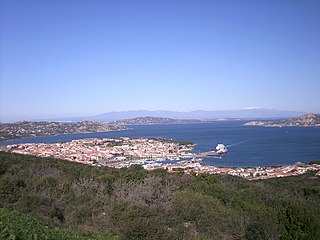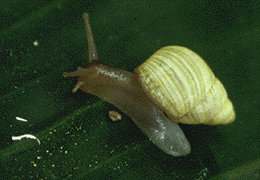Related Research Articles

The common sandpiper is a small Palearctic wader. This bird and its American sister species, the spotted sandpiper, make up the genus Actitis. They are parapatric and replace each other geographically; stray birds of either species may settle down with breeders of the other and hybridize. Hybridization has also been reported between the common sandpiper and the green sandpiper, a basal species of the closely related shank genus Tringa.

The Rock Islands of Palau, also called Chelbacheb, are a collection of several hundred small limestone or coral uprises in the Southern Lagoon of Palau between Koror and Peleliu, now an incorporated part of Koror State. There are between 250 and 300 islands in the group according to different sources, with an aggregate area of 42 square kilometres (16 sq mi) and a maximum height of 207 metres (679 ft). The islands were declared a UNESCO World Heritage Site in 2012.

Muricidae is a large and varied taxonomic family of small to large predatory sea snails, marine gastropod mollusks, commonly known as murex snails or rock snails. With about 1,600 living species, the Muricidae represent almost 10% of the Neogastropoda. Additionally, 1,200 fossil species have been recognized. Numerous subfamilies are recognized, although experts disagree about the subfamily divisions and the definitions of the genera. Many muricids have unusual shells which are considered attractive by shell collectors and by interior designers.

The aperture is an opening in certain kinds of mollusc shells: it is the main opening of the shell, where the head-foot part of the body of the animal emerges for locomotion, feeding, etc.

Limpets are a group of aquatic snails that exhibit a conical shell shape (patelliform) and a strong, muscular foot. Although all limpets are members of the class Gastropoda, limpets are polyphyletic, meaning the various groups which are referred to as "limpets" have descended independently from different ancestral gastropods. This general category of conical shell is known as "patelliform" (dish-shaped). All members of the large and ancient marine clade Patellogastropoda are limpets. Within that clade, the members of the Patellidae family in particular are often referred to as "true limpets".

Jellyfish Lake is a marine lake located on Eil Malk island in Palau. Eil Malk is part of the Rock Islands, a group of small, rocky, mostly uninhabited islands in Palau's Southern Lagoon, between Koror and Peleliu. There are about 70 other marine lakes located throughout the Rock Islands. Millions of golden jellyfish migrate horizontally across the lake daily.

Sea snail is a common name for slow moving marine gastropod molluscs usually with visible external shells, such as whelk or abalone. They share the taxonomic class Gastropoda with slugs, which are distinguished from snails primarily by the absence of a visible shell.

Palau is a comune (municipality) in the Province of Sassari in the Italian region Sardinia, about 220 kilometres (140 mi) north of Cagliari and about 30 kilometres (19 mi) northwest of Olbia. It was a frazione of the comune of Tempio Pausania until 1959.

Aaadonta is a genus of air-breathing land snails, terrestrial pulmonate gastropod mollusks in the family Endodontidae. Specimens from this genus are endemic to Palau.

Euglandina rosea, common names the rosy wolfsnail or the cannibal snail, is a species of medium-sized to large predatory air-breathing land snail, a carnivorous terrestrial pulmonate gastropod mollusk in the family Spiraxidae.

Elona quimperiana, common name the escargot de Quimper, is a species of air-breathing land snail, a terrestrial pulmonate gastropod mollusk in the family Elonidae.
†Partula dolorosa was a species of air-breathing tropical land snail, a terrestrial pulmonate gastropod mollusk in the family Partulidae. This species was endemic to a highland on Raiatea, French Polynesia. It is now extinct.

Samoana attenuata is a species of air-breathing tropical land snail, a terrestrial pulmonate gastropod mollusk in the family Partulidae. This species is endemic to French Polynesia.

Partulidae is a family of air-breathing land snails, terrestrial gastropod mollusks in the superfamily Partuloidea. The family is endemic to Pacific islands.

Partula is a genus of air-breathing tropical land snails, terrestrial pulmonate gastropod mollusks in the family Partulidae. Many species of Partula are known under the general common names "Polynesian tree snail" and "Moorean viviparous tree snail". Partulids are distributed across 5,000 sq mi (13,000 km2) of Pacific Ocean islands, from the Society Islands to New Guinea.

Goby Lake is a marine lake located on Koror island in Palau. There are about 70 other marine lakes located throughout the Rock Islands and Koror. Goby Lake is notable for endemic subspecies of golden jellyfish and is one of five marine lakes in Palau used for several scientific researches in evolutionary biology the other lakes being Jellyfish Lake, Clear Lake (Palau), Uet era Ngermeuangel, Uet era Ongael.
Triviella insolita is a species of small sea snail, a marine gastropod mollusk in the family Triviidae, the false cowries or trivias.
Malleodectes is a genus of unusual marsupial species, first discovered in 2011 at Riversleigh, Queensland, Australia. It could grow as large as a ferret, and lived in the Miocene, 17 million years ago. The reason for its name, which means "Hammer Biter", is because it has blunt, hammer like teeth, not known from any other mammal extant or extinct. However, Scott Hocknull from the Queensland Museum has noticed similarities to the modern pink-tongued skink, a reptile specialised for eating snails. This suggests that Malleodectes too was a specialised snail hunter.

Neoferdina is a genus of starfish in the family Goniasteridae. Members of the genus are found in the Indo-Pacific region, mostly between the Andaman Isles to the West and the Wake Isles, the Marshall Isles and Fiji to the east. The discovery of several species in the Seychelles widened the range considerably.
Partula meyeri is a species of tropical, air-breathing land snail, a terrestrial, pulmonate, gastropod mollusc in the family Partulidae.